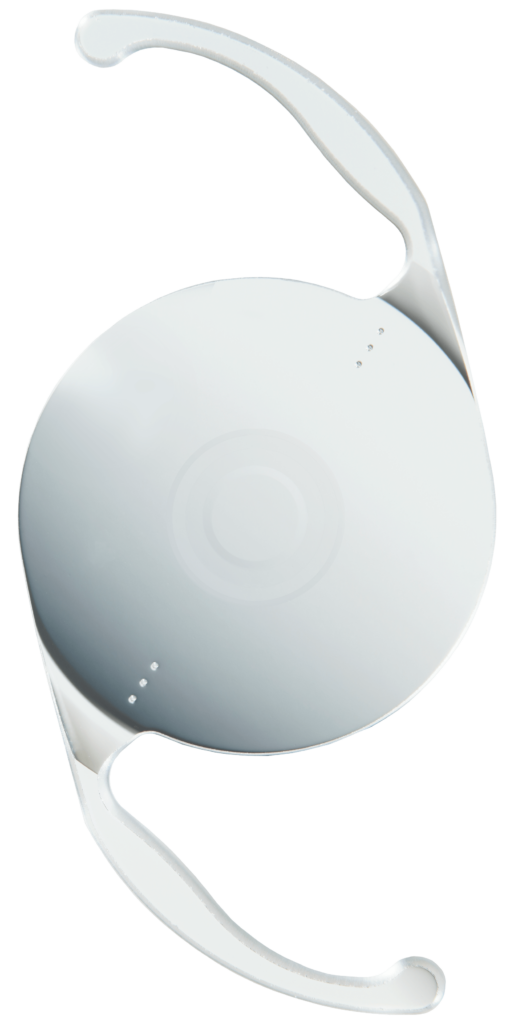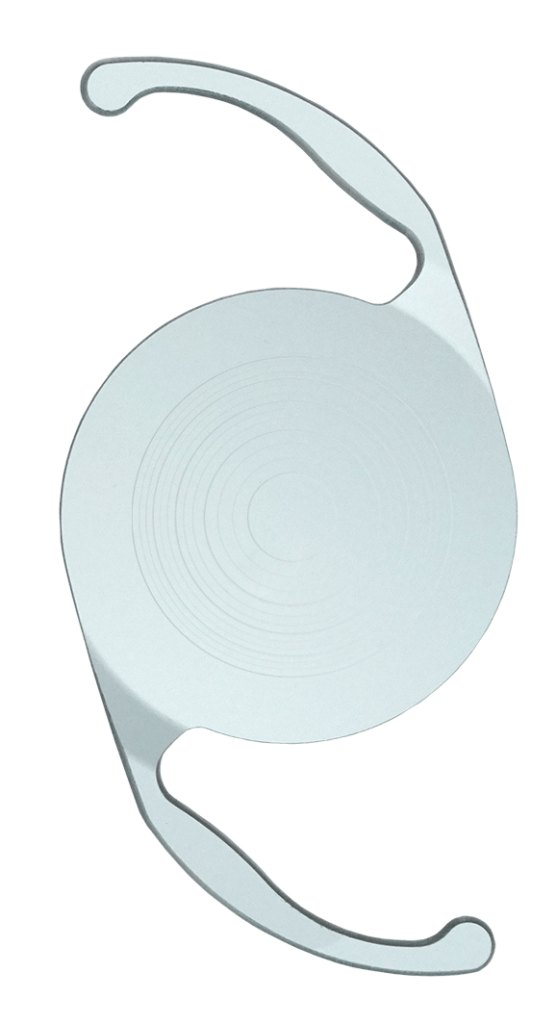
Cataracts are a part of the natural aging process inside the eye that can cause blurry vision, among many other symptoms. At Berg Eye Group, our experienced eye doctors have the expertise to diagnose, monitor, and treat cataracts to ensure you experience crisp, quality vision for years to come.
Cataracts begin to develop in most people in their forties. As the eye ages, the eye’s natural lens begins to harden and cloud.
The eye’s lens is responsible for bending light to fall directly on the retina. Before cataracts develop, the lens is flexible and clear, allowing you to see with clear vision at multiple ranges of distance.
When the lens hardens, it is not able to easily bend and direct the light appropriately. The best way to restore vision affected by cataracts is through cataract surgery.

Cataracts can cause different symptoms depending on each person and how advanced the cataracts are. However, some common symptoms most people experience when they have cataracts are:
When you are first diagnosed with cataracts, your eye doctor will likely monitor changes to your vision and your eye’s lens over time. Your eye doctor will tell you once they have become advanced enough to warrant having them removed, which is most often when these symptoms worsen and begin to affect your everyday life.
Once it is time for cataract surgery, your doctor will help you decide which artificial lens is best to replace your natural lens, depending on your lifestyle and vision goals. These artificial lenses are often referred to as intraocular lenses or IOLs.
There are a variety of lenses available, including standard and premium lenses. Standard lenses are monofocal, allowing you to have crisp vision at one distance range.
Many people who choose a monofocal lens will opt to have clear vision at a distance and will wear glasses for other near activities, such as reading or using the computer. Premium lenses, while often more expensive, can provide you with greater freedom from glasses after the procedure.




Toric lenses are specifically designed to correct astigmatism. An eye with astigmatism has a cornea that is shaped more like a football compared to a normal cornea that is more spherical like a basketball.
Depending on your level of astigmatism, your eye doctor may recommend choosing a toric lens to provide you with the best visual outcome.
Many premium lenses are available in a toric model, including models by Alcon, TECNIS, and the enVista IOL.
Compared to standard IOLs, premium IOLs, also known as lifestyle lenses, can provide you with a broader range of vision without visual aids. At Berg Eye Group, our cataract surgeons offer some of the most advanced premium lenses, including the TECNIS Symfony IOL, the Alcon Vivity IOL, and the Alcon PanOptix IOL.
The TECNIS Symfony and the Alcon Vivity IOLs are known as EDOF or extended depth of focus IOLs. EDOF lenses have a variety of benefits due to their design of an elongated focal point. Besides restoring vision and removing the unwanted symptoms of cataracts, EDOF lenses correct presbyopia and other refractive errors. Presbyopia is the gradual, age-related inability of your eye to focus on objects close to you.
The Symfony IOL has many benefits. When compared with traditional multifocal IOLs, there is reduced experiences of visual aberrations that commonly occur at night, such as loss of contrast, halos around lights, or glare from light sources. The Alcon Vivity IOL is also an EDOF IOL.
The Alcon Vivity IOL uses a unique non-diffractive technology called X-Wave. X-Wave technology will allow you to experience smooth transitions between focal ranges, and like the Symfony IOL, you will also experience fewer visual disturbances.
The cataract surgeons at Berg Eye Group also offer a trifocal option, the Alcon PanOptix IOL. This trifocal lens allows you to switch seamlessly between three different ranges of vision, minimizing dependence on glasses for most activities.
Not every lens will fit every person. Be sure to discuss your visual goals with your eye doctor, who will work with you to determine which lens will best accomplish your goals.

The process of cataract surgery can seem daunting to many people. However, since everyone eventually develops cataracts, it is a very common procedure.
The cataract surgeons at Berg Eye Group are skilled and experienced in cataract surgery and will do their best to ease your worries and answer your questions as you prepare for the procedure. Cataract surgery is an outpatient procedure, meaning you can go home the same day once the surgery is complete. However, on the day of your procedure, you will need to have a friend or a family member drive you to the surgery center and back home after the procedure since you will receive light sedation during surgery.
During surgery, your cataract surgeon will numb your eyes using eye drops.
Then, your cataract surgeon will make a small opening in the cornea, which is the transparent dome-shaped tissue at the front of your eye. Through this opening, they will be able to reach the lens which sits behind the iris, which is the colored part of your eye.
Then, they will use instruments to break up and remove your cloudy natural lens. After removing the natural lens, your cataract surgeon will insert the new implant lens and place it in the correct position.
In most cases, no stitches will be required because of the small self-sealing incisions your cataract surgeon will create.
Thanks to advancements in surgical methods, cataract surgery recovery takes days to weeks and does not require much downtime. You can return to most daily activities within days of the procedure.
After the procedure, your cataract surgeon will provide you with a list of instructions to follow during recovery. You must follow these instructions closely to ensure that your eyes heal properly and that you avoid any possible complications.
Your cataract surgeon may ask you to use medicated eye drops to help your eyes heal. It is essential to take these eye drops as instructed to avoid complications.
Your cataract surgeon will want to see you the day after surgery to ensure that the lens positioning looks good and that your eyes are correctly beginning the healing process. Many people notice improvements in their vision within 24 hours after the procedure. Vision may continue to improve for up to 4-6 weeks following surgery.
For some people, it can take several months for their eyes to completely heal and reach their full visual potential. Do you want to learn more about cataracts or determine if you are beginning to develop them? Schedule a cataract evaluation at Berg Eye Group in Albany, GA, today!